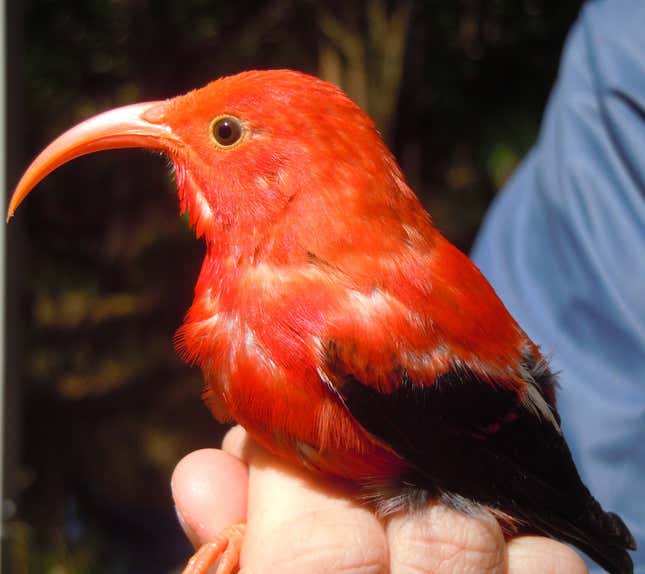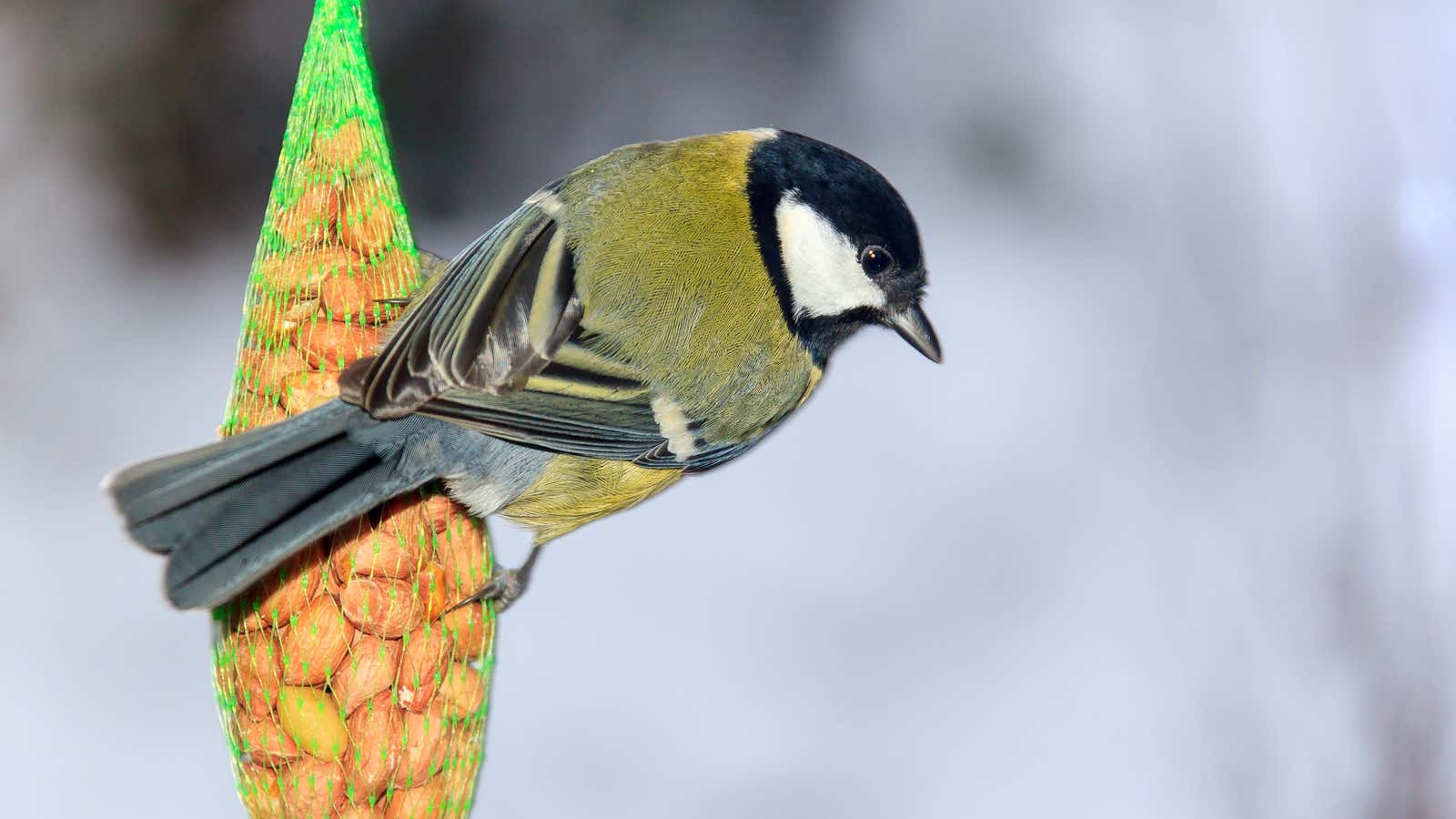A common backyard bird evolved an extra-long beak in a stunningly short period of time, researchers have found, and the reason might be the very human (and specifically very British) phenomenon of bird feeders.
Up until now, as far as any bird expert knew, great tits that lived in the UK and great tits that lived in the Netherlands were almost exactly the same. There was no reason to believe otherwise; they inhabit a fairly similar natural habitat, aren’t geographically that far apart to begin with, and look almost exactly the same. But when researchers happened to comb through the genomes of birds from each country, they discovered something pretty strange that completely undermined that assumption.
Great tits from the UK and great tits from the Netherlands, they realized, had significant differences in their DNA—specifically in the regions associated with beak morphology. Wondering why that would be, they then they looked at samples of birds from each country dating back to the 1970s and saw how the two groups grew apart, genetically, over a relatively short time. It was, indeed, all in the beaks.
The researchers could see the beaks of the British great tit lengthened from 1970 to the present. Their beaks have only grown about a millimeter or so longer in that time, mind you, but in evolutionary terms, that’s plenty.
“Our measurements of beak length go back to the 1970s—and we can see an observable increase in beak length,” says Lewis Spurgin, a researcher at the University of East Anglia, and a co-author on the resulting study, published Thursday (Oct. 19) in the journal Science, “we think [the adaptation] goes back farther than that, about 100 years back.”
Spurgin and his co-authors weren’t sure what could have caused such a “recent and rapid natural selection,” and so sought input from the entire community of bird experts at the University of Oxford’s ornithology institute. One answer came back more often than any other: It was probably all the birdfeeders.
People in the UK spend roughly twice as much money on birdseed and birdfeeders than mainland Europeans, according to Spurgin. Brits’ unique enthusiasm for feeding birds, “started in the Victorian times, in the 19th century,” he says. Punch, a popular magazine in Victorian England, even went so far as to declare bird feeding a national pastime, according to Spurgin.
A longer beak might help a bird outcompete others for the seeds buried deep in feeders, or “it could be that they don’t drop seeds when they’re carrying them away,” Spurgin offers. Either way, getting more food is a sign of better fitness; the process of natural selection would take it from there.

In 2009, other researchers found a similar phenomenon happening among British blackcaps, a small warbler also common to British backyards, though Spurgin notes those researchers didn’t have the clear DNA evidence of evolution that his team’s paper offers. The genetic changes offer a particularly compelling example of extremely swift natural selection.
Lots of other birds have beaks specially adapted to the food they eat. One striking example is the critically endangered Hawaiian honeycreepers, whose beaks have adapted to feed from the long, tube-like flowers in the Hibiscadelphus genus. The difference, Spurgin explains, is that the honeycreepers took thousands of years to evolve those beaks; the great tit evolved its longer beak in scarcely a fraction of that time.
